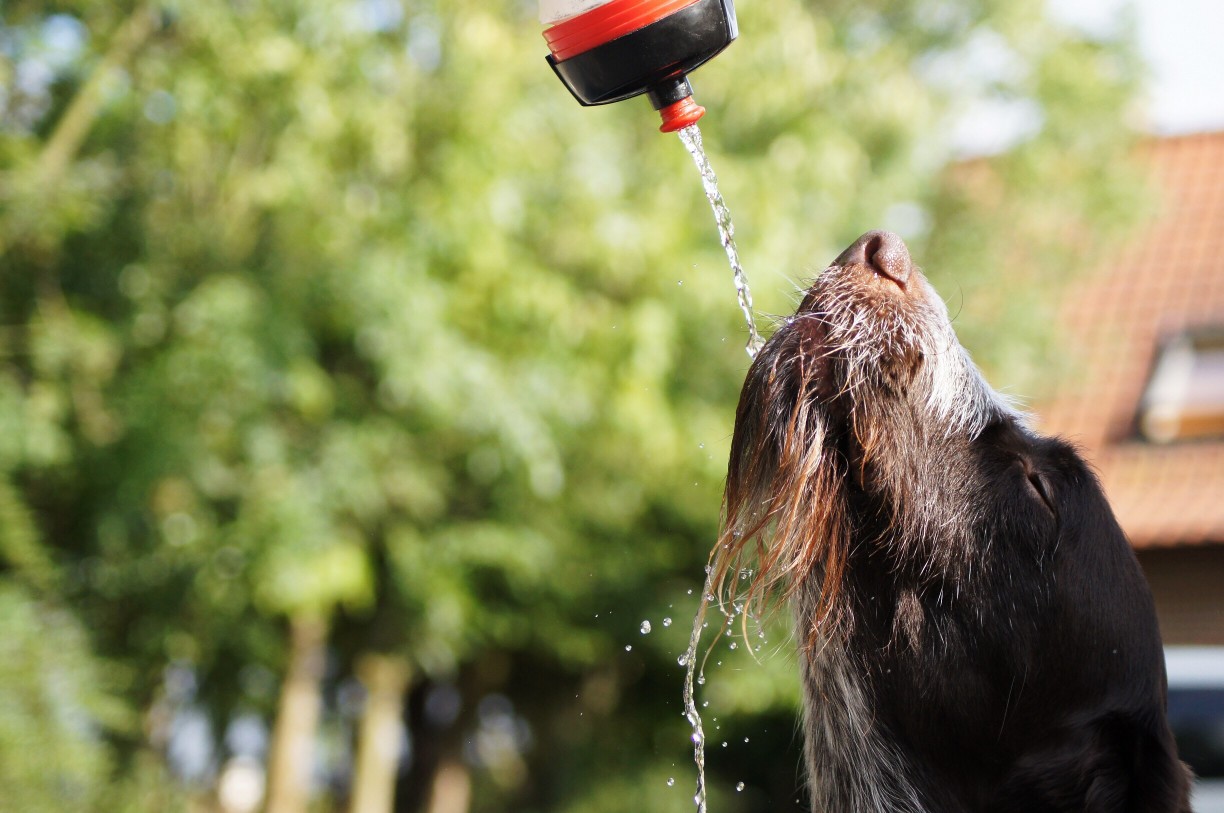5 Important Tips You Need to Know About Pet Hydration
Water is vital for life. In both humans and our pets, water helps regulate body temperature, supports cell function, keeps skin and joints healthy, aids in digestion, and cleanses the body of various toxins.
Optimizing our pet’s daily water intake is critical to their well-being and longevity.
Our Top Five Tips to Keeping Your Pet Hydrated
1 – Many pets are what we call ‘sub clinically dehydrated’.
This means that there aren’t outward signs that tell us your pet is not getting enough water – but during times of stress, exertion, excessive heat/humidity, or illness signs of dehydration show up quicker. This can exacerbate whatever signs are present because your pet wasn’t optimally hydrated in the first place. Signs of dehydration include lethargy, loss of appetite, excessive panting, dry and/or pale nose, and gums. If you notice any of these seek veterinary care!
Solution: Be sure to offer fresh drinking water each day, and replace the water when it gets low. Offering multiple water bowls, water fountains (cats!), or adding things like bone broth, fresh fruit and vegetables, water to your pet’s food at mealtime can also provide additional water – especially during warm weather!
2 – The TYPE of water you choose to provide matters!
While you can utilize distilled water these options have had minerals removed, which may not be ideal. Various minerals and ions are important for many processes in the body and could lead to less than optimal hydration and nutrition. In fact, some research does indicate dogs experience potassium deficiencies and heart problems from long-term consumption of distilled water.
Solution: Use regular tap water, filtered if possible. You can also use filtered “bulk” water that comes in the 5-gallon water bottles.
3 – Say NO to ‘alkaline’ water!
While many tests have concluded that many bottled waters that claim to be alkaline actually are not alkaline when pH tested, it’s not worth the risk. Alkaline water has several health concerns that are controversial for both humans and pets:
The pH of the stomach is highly acidic, and the acidity is required to digest food optimally, control bacteria and regulate the passage of stomach contents into the intestine. When this is disrupted all these factors could be negatively affected.
If your pet is at risk or has kidney disease, urinary conditions (e.g. crystals or stones, diabetes, or other conditions like infection or that require surgery alkaline water could complicate matters.
Solution: Stick with regular tap or “bulk” water (see #2).
4 – Size matters.
Cats and dogs can develop an aversion to water (and food) because the whiskers on the side of their face are sensitive! When their whiskers constantly hit the sides of the bowl when they are eating and drinking it can be painful.
Solution: Offer a bowl with an opening wider than the span of their whiskers. Even if you don’t think it is bothersome for them, you will likely notice them drinking more water!
5 – Bowl type matters!
The topic of materials used in pet food and water bowls has received a lot of attention over the years and has been the subject of some heated debates. Here are the facts:
- Like baby bottles (even BPA-free), plastic water bowls can leak hormone-disrupting chemicals and microplastics into the water (and food) especially when they are exposed to the high heat of a dishwasher or a microwave. Additionally, once the surface of plastic becomes worn it becomes hard to clean them which leads to bacteria risk. Some pets even react to the material of some plastic bowls resulting in redness and rashes on the snout. Avoid plastic food and water bowls.
- Stainless steel historically has been most recommended as the safest option. However, new technology has provided insight into the dangers of the chemicals these bowls also leak into food and water. These chemicals are known as ‘cutting fluids’ which are used in the manufacturing process. Additionally, many tests have shown that there are other elements often incorporated into these bowls and they are not quality stainless. Avoid stainless steel food and water bowls.
Solution 1: Ceramic and glass bowls are generally the safest options as long as they are made with quality materials meant for culinary use and designed for exposure to high heat (e.g. dishwasher, microwave). There has been some controversy linking these bowls to having a higher risk for harboring bacteria – however, that is only if you do not properly clean your pet’s water (and food) bowls as you would clean your own dishes. This is a critical factor that is always overlooked.
Solution 2: There are several plant-based plastic alternatives to traditional bowls that are also great options! Some of our favorites include Beco bowls which include grooves to accommodate pet’s whiskers and Mine Pet Platters (for food) which promote interactive feeding. Silicone pet bowls are also a great option (and travel-friendly!) but be sure to clean these regularly as they have been found to grow algae quite easily.
*This article is for informational purposes only. It is not meant to provide medical advice or replace the advice of a qualified veterinarian.






